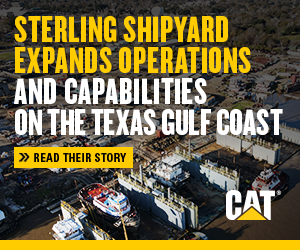Port Of Muskogee, Okla., Reports 20 Percent Tonnage Increase In 2017
For 2017, the Port of Muskogee (Okla.) reported a 20 percent increase in barge tonnage when compared to 2016 numbers. Barge tonnage for 2017 totaled 696,718 tons, surpassing 578,613 tons in fiscal year 2016.
Port Director Scott Robinson said increased tonnage at the port, which was also experienced in rail and truck tonnage by 38 and 82 percent respectively, reflects a healthier pipe, oil and gas industry.
“In 2017, there was a strong rebound in oil and gas drilling activity, in Oklahoma, which resulted in increased pipe, steel coil, plate and rebar tonnage at the Port of Muskogee,” said Robinson. “The Port of Muskogee is the best multi-modal option for staging oil field tubular goods, frac sand, barite and other materials used for oil and gas exploration and development.”
In December 2017, 43,242 tons of cargo was moved in or out by barge and included fertilizer, molasses, zircon sand, porcelain tile raw materials, steel coils, wire coils, rebar, pet coke, scrap steel and fly ash. Inbound shipments made up 88 percent of cargo handled at the port, with 12 percent being outbound product.
“Historically, 75 percent of the port’s barge and rail shipments are for the benefit of local and regional manufacturers,” said Robinson. “The port’s public terminal operator, Oakley’s Terminal-Muskogee, receives a variety of bulk and breakbulk shipments by barge and rail; provides inside and outside storage, as appropriate for the type of cargo; and delivers the cargo to local and regional manufacturers by truck on a daily basis.”
The port, located on the nation’s most inland, all-weather waterway, serves as a vital hub for freight via railroad, truck and barge to provide mid-continent shippers multimodal access to destinations on the inland waterway network and world markets via the Gulf of Mexico. As many as 11 local industries depend on access to the port and the McClellan-Kerr Arkansas River Navigation System.
These industries have invested more than $2 billion in their facilities and have created more than 2,500 jobs with a combined payroll of more than $125 million annually. The port imports and exports a variety of bulk, break bulk and liquid cargo, including iron and steel, industrial minerals, asphalt, petroleum coke, coal, construction materials, molasses, fertilizer and other agricultural products.



